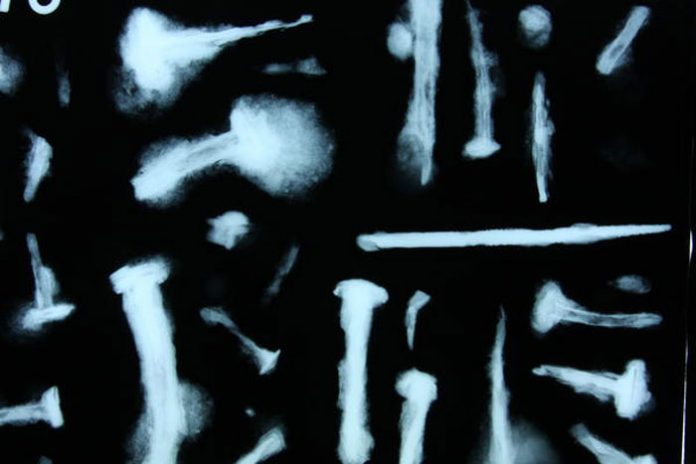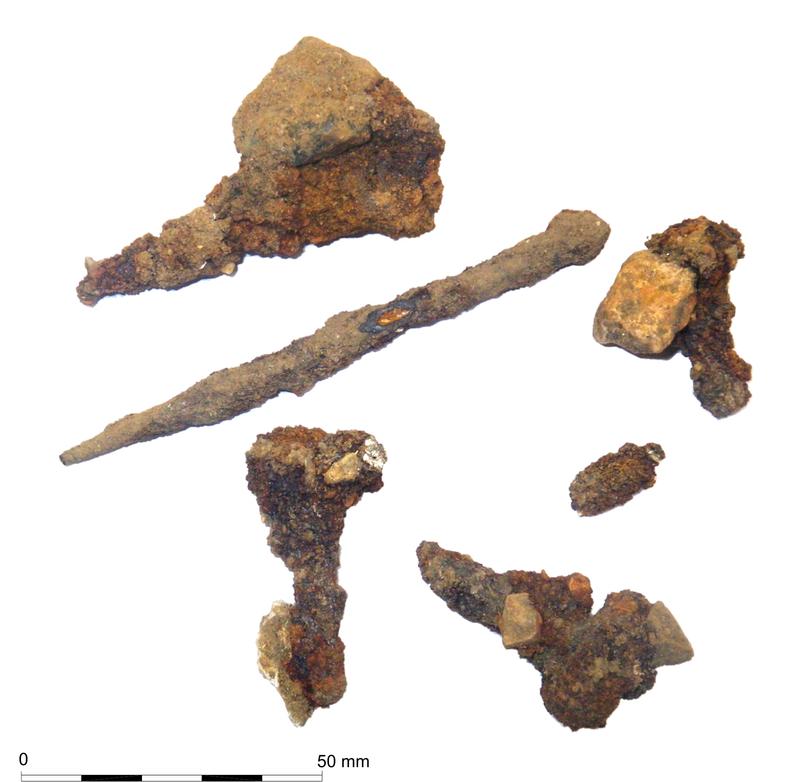The value of X-raying was demonstrated recently when a small iron file was identified among a batch of nearly 500 Roman nails recovered from a site in the south-east of England. The 104 mm long tool, which had closely set teeth and a tapered end, would have been used for detailed metalworking. Its short tang (visible on the left side of the X-ray) would have been set in a handle made of wood or bone. The design and use of such tools has changed little since the Iron Age; much earlier examples have been found in Egypt and Greece.
Wessex Archaeology benefits from in-house X-raying facilities and the services of experienced Conservator Lynn Wootten.
By Kirsten Egging Dinwiddy, Osteoarchaeologist



